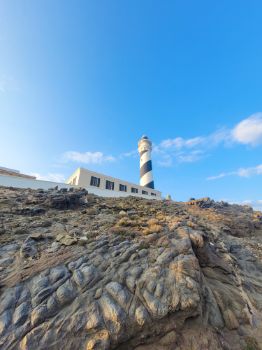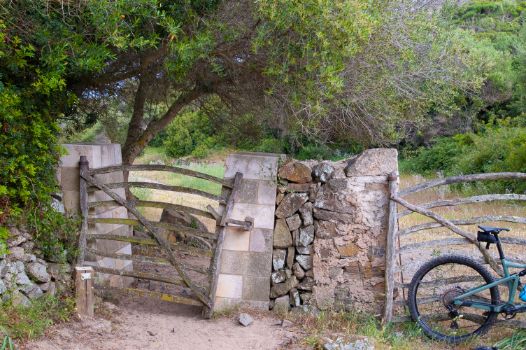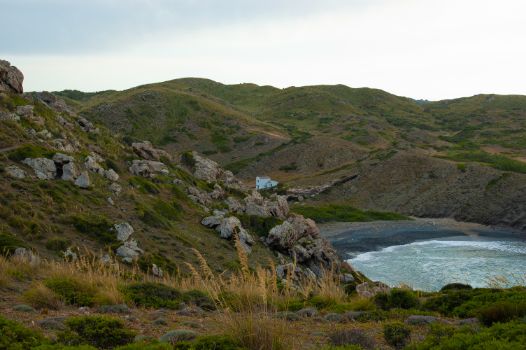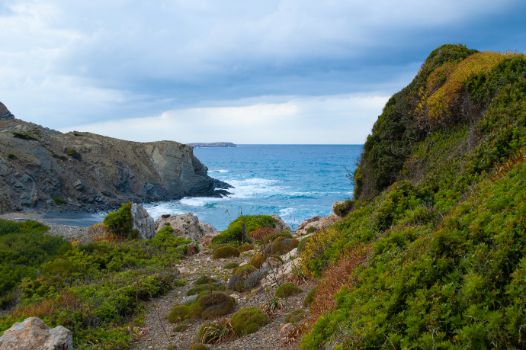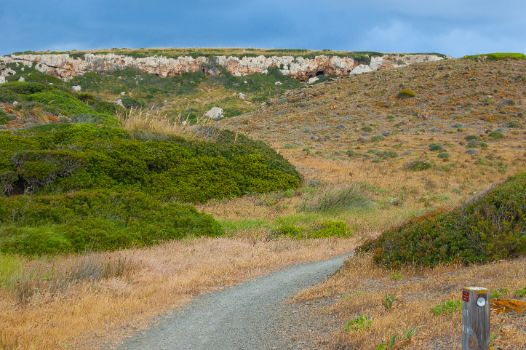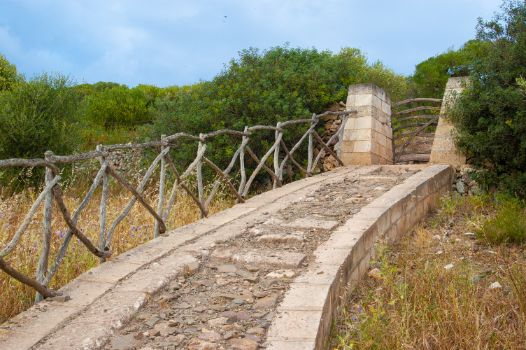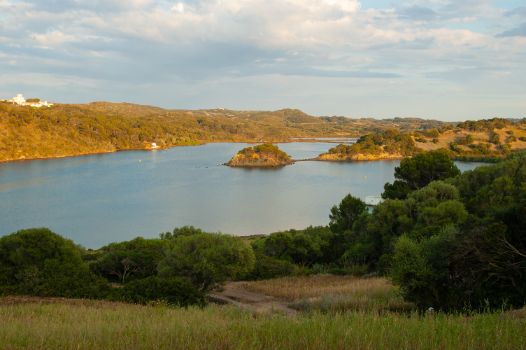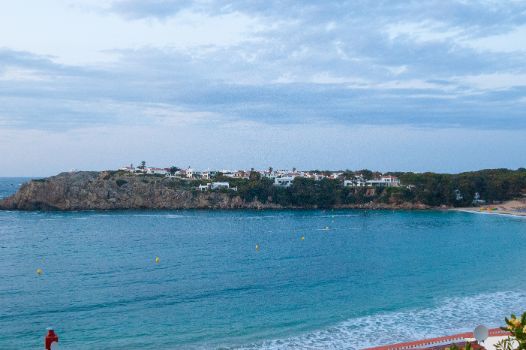
Net of Natural
Trails

Stage 3: Faro de Favàritx - Arenal d’en Castell
Description
Crossing the heart of S'Albufera des Grau Natural Park
The lighthouse of Cabo Favàritx illuminates this spectacular stretch that visits different spots within the S'Albufera des Grau Natural Park, including places of great beauty as the Pou d'en Caldes beach and of high environmental value as Ses Salines d'Addaia and its surroundings. The final point of this stage the S'Arenal d'en Castell beach.

The third stage of the Camí de Cavalls Nature Trail begins at the typical information board, where you can find out about the new adventure you is about to embark on. This point is less than a kilometre away from Cap de Favàritx and its lighthouse, taking to the asphalt route to the right (CF-1).
The characteristic landscape with its dark hues is caused by the materials it is composed of, dominated by slate. The Favàritx lighthouse sits on the highest point. Built between 1917 and 1922, the lighthouse tower is 28m tall, currently painted white, with a black spiral running up and down which gives it personality.
Visiting the lighthouse is a must if you are in the area. Afterwards, the stage itself starts at the information board, then turns left onto the asphalted track, entering the S'Albufera des Grau Natural Park where, after walking a few metres, you will reach a car park within the natural park where you can park your car if you’re driving and fully enjoy this environment and this Nature Trail.
After a cattle grid, which prevents livestock from roaming freely between neighbouring farms, you will continue along the asphalt road for a few metres before turning right, and crossing a typical Menorcan gate made of wild olive wood, which is one of the most important symbols of Menorca.

Then, you will find yourself on a dirt road surrounded by the great biodiversity of the Mediterranean scrubland, which slowly become dominant over crop fields and pastures. In this part of the route you will meet surfers carrying their boards to the beach of Pou d'en Caldes, which is a very popular surfing destination.
At this point the trail becomes a path from which you can see the beach. After (carefully) climbing down, you will reach a wooden footbridge suitable for pedestrians and bicycles, and then a new Menorcan gate. Once past it, the beach of Pou d'en Caldes awaits the traveller on the right and on the left the continuation of this fascinating stage 3.
Turn again, this time to the right, to take new wooden footbridge, which marks the beginning of a stretch that crosses a patch of Mediterranean scrubland. If you are walking this stretch in spring, you will be able to see a lot of plants blooming, such as the blackberry bush (Rubus ulmifolius).

After passing waymarker 50 of this stage 3, which stands by a Menorcan gate followed by a descending stone ramp built in stone, the Mediterranean scrubland that has been predominant until now gives way to cereal fields.
You will walk through a small patch of Aleppo pine (Pinus halepensis) you will reach a small stretch of a well-maintained wide road by which motor vehicles also pass. A few metres further on, there is a new Menorcan gate where this section ends. Next to it are boards with information on the environmental value of the area through you are about to walk, which constitutes the core of the Natural Park of s'Albufera des Grau.
A few metres ahead, the smell of salty air anticipates that the Camí de Cavalls Nature Trail is approaching Ses Salines d'Addaia, the evaporation ponds using for salt harvesting in Menorca. They were created in 1845 and remained in operation until 1990, maintaining the artisanal salt harvesting method throughout their useful life. The remains of the different elements that made up these salt evaporation ponds can still be seen today, and it is also an ideal birdwatching spot, as many aquatic birds find that this is ideal place for breeding and nesting. A little further along the way, a information board on the natural park reminds you that this is a very fragile environment that needs to be protected, most especially its birdlife.
Surrounding the bay of Port d'Addaia, a series Menorcan gates follow one after the other, until you finally leave the S'Albufera des Grau Natural Park at the point at which the bay ends. Pastures dotted with livestock farms and grazing cattle and sheep flank the road. After a new succession of Menorcan gates, you will reach the town of Addaia.

In the urban section, simply follow the existing signposting and there is also a small information board detailing the route. This residential area has all necessary services, if you happen to need something. Afterwards, you will leave it using a road that is shared with cars and other vehicles for 750 m but can be completed almost entirely along the pedestrian cycle lane on the right of the Me-11 road.
Going up the avenue of S'Arenal you can see the spectacular beach of S'Arenal d'en Castell. A signpost turns indicates you to turn right, and you will have to down a succession of ramps and stairs that descend practically to the beach. After enjoying this beach and its gastronomic and leisure offer, you will climbs up the Vía de Ronda, although you will probably want to glance back one last time at the beautiful bay with its crystal clear waters.. Then, turn right along a dirt track leads that will lead you to board where this third stage of the Camí de Cavalls Nature Trail comes to an end.
Links of interest
Puntos de interés
Municipality
Orography
Profile
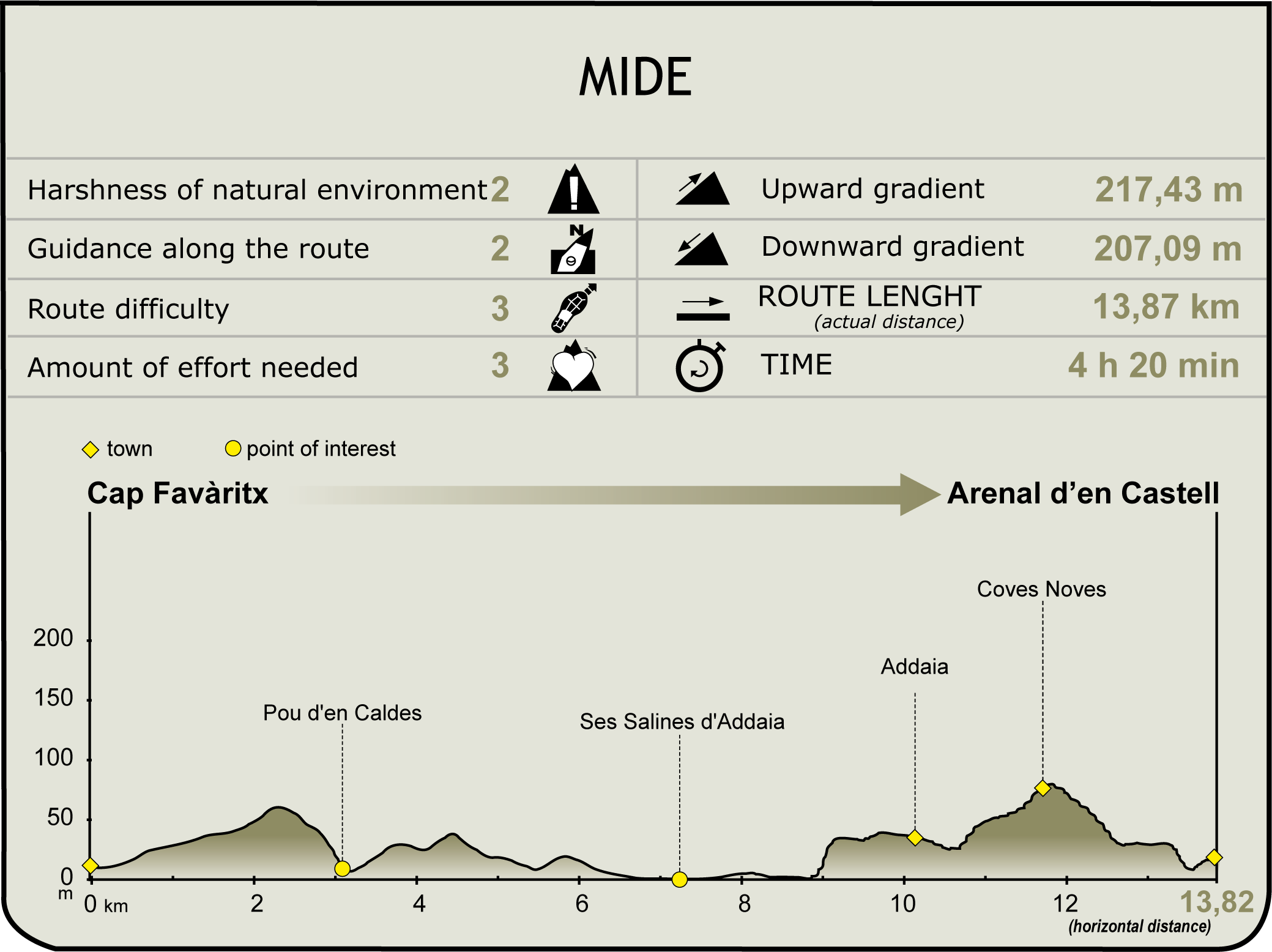
(Calculated according to the MIDE criteria for an average excursionist with a light load)
Highlights
Favàritx lighthouse
Lighthouse built between 1917 and 1922 on the cape of the same name, on a slate terrain that gives this environment its characteristic dark hues. The main purpose of this infrastructure was to prevent further shipwrecks after the tragedies that occurred in the first decade of the 20th century.
With a 28 m high concrete tower (the first to be built in this way in the Balearic Islands), it was electrified in 1971. Its original optical instruments are preserved the permanent exhibition of the lighthouse of Portopí, in Mallorca. This exhibition can be visited by arranging an appointment by telephone.
Ses Salines d'Addaia
These salt evaporation ponds were built in 1845 and, despite production was modest, they had a great economic relevance in the past. They were active for almost a century and a half, until 1990.
The chosen location was at the end of the conveniently shallow end of the bay, below which the 16,000 m2 of this former salt evaporation ponds stretched out. These facilities have operated using the traditional salt harvesting process throughout its life.
Today you can enjoy its ethnographic value and its revitalised environmental value, being one of the most important nesting and breeding areas for many of bird species in the S'Albufera des Grau Natural Park.



